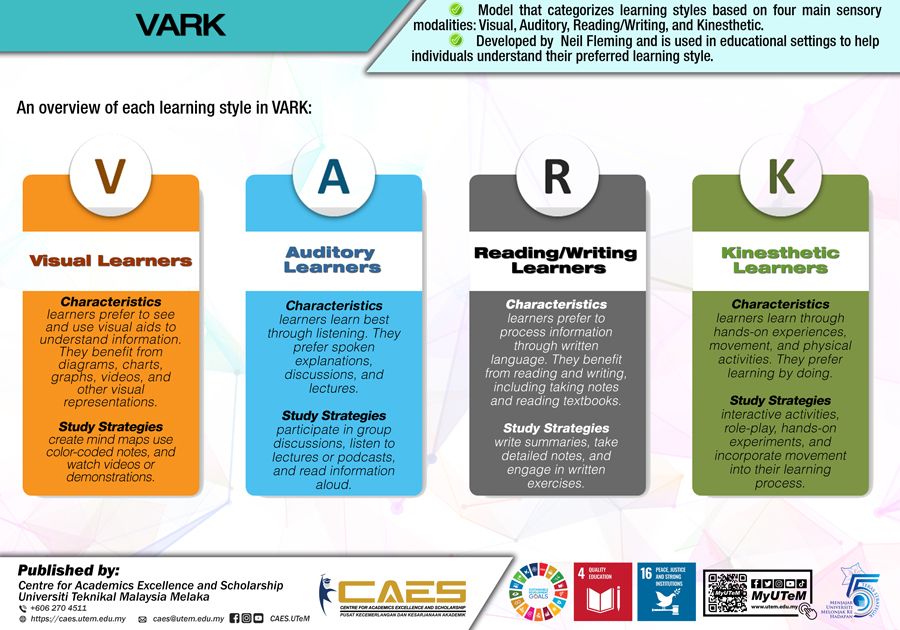INFO@CAES
June 2024

VARK
VARK is a popular model that categorizes learning styles based on four main sensory modalities: Visual, Auditory, Reading/Writing, and Kinesthetic. The VARK model was developed by Neil Fleming and is widely used in educational settings to help individuals understand their preferred learning style. Here's an overview of each learning style in the VARK model:
-
Visual Learners (V)
⦁ Characteristics: Visual learners prefer to see and use visual aids to understand information. They benefit from diagrams, charts, graphs, videos, and other visual representations.
⦁ Study Strategies: Visual learners often find it helpful to create mind maps, use color-coded notes, and watch videos or demonstrations. -
Auditory Learners (A)
⦁ Characteristics: Auditory learners learn best through listening. They prefer spoken explanations, discussions, and lectures.
⦁ Study Strategies: Auditory learners may benefit from participating in group discussions, listening to lectures or podcasts, and reading information aloud. -
Reading/Writing Learners (R)
⦁ Characteristics: Reading/writing learners prefer to process information through written language. They benefit from reading and writing, including taking notes and reading textbooks.
⦁ Study Strategies: Reading/writing learners often find it helpful to write summaries, take detailed notes, and engage in written exercises. -
Kinesthetic Learners (K)
⦁ Characteristics: Kinesthetic learners learn best through hands-on experiences, movement, and physical activities. They prefer learning by doing.
⦁ Study Strategies: Kinesthetic learners benefit from interactive activities, role-playing, hands-on experiments, and incorporating movement into their learning process.
It's worth noting that individuals may exhibit preferences for more than one learning style, and some may have a combination of preferences. The VARK model encourages learners to recognize their preferred styles and explore different study strategies that align with those preferences. However, it's important for educators to recognize that a diverse range of instructional methods can benefit learners with different preferences, promoting a more inclusive learning environment.
Wed 26/6/2024 10:11 AM